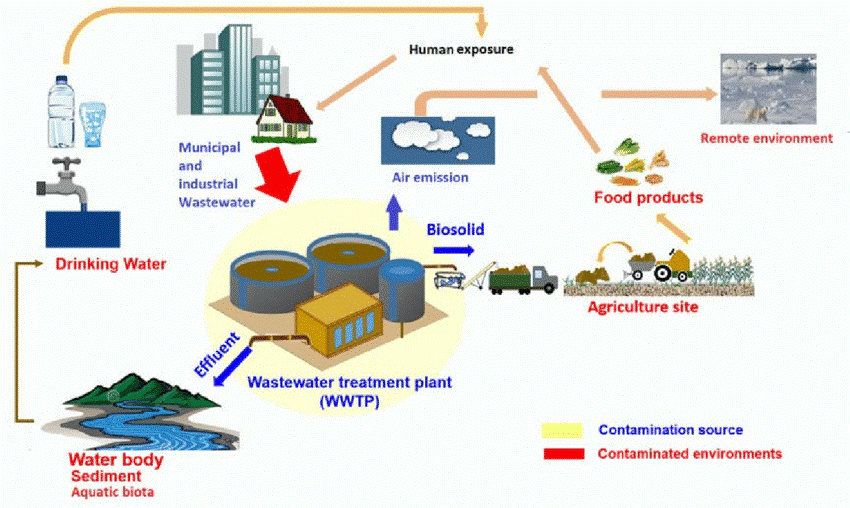Best Practices for PFAS Waste Management at Treatment Facilities
Wiki Article
Ingenious PFAS Treatment Solutions for Safer Water
The boosting prevalence of PFAS contamination in water products necessitates a critical assessment of cutting-edge therapy solutions. Advanced filtering technologies and novel chemical therapies present appealing methods for minimizing these relentless contaminants. In addition, emerging bioremediation methods supply a more lasting approach to dealing with PFAS obstacles. As regulatory frameworks proceed to adjust, understanding the efficiency and scalability of these solutions ends up being vital. What effects do these developments hold for public health and wellness and ecological restoration, and exactly how can stakeholders properly implement them in diverse contexts?Review of PFAS Contamination
PFAS contamination has actually become a significant ecological and public health and wellness worry. Per- and polyfluoroalkyl materials (PFAS) are a team of artificial chemicals recognized for their perseverance in the setting and body, leading them to be typically referred to as "forever chemicals." These compounds have been extensively made use of in various industries, including firefighting foams, water-repellent fabrics, and food packaging, mostly as a result of their water- and grease-resistant residential properties.The prevalent usage of PFAS has actually resulted in their detection in soil, water supplies, and even in the blood of humans and animals. Research studies have connected PFAS direct exposure to countless wellness concerns, consisting of developing impacts in infants, immune system disorder, and different forms of cancer cells. In addition, the ecological determination of these compounds complicates their degradation and elimination, elevating problems concerning lasting eco-friendly effects.
Regulative bodies are increasingly applying rigid standards to monitor and reduce PFAS degrees in drinking water and other ecological mediums. As awareness of PFAS contamination expands, it has actually ended up being imperative for neighborhoods and industries to seek reliable treatment solutions to alleviate exposure and guard public wellness.
Advanced Filtration Technologies
As the necessity to address PFAS contamination intensifies, progressed purification technologies have emerged as a critical part in the remediation initiatives focused on getting rid of these consistent chemicals from water sources. These innovations leverage advanced devices to effectively target and catch PFAS substances, which are infamously resistant to conventional treatment approaches.Among the most appealing techniques is using granular activated carbon (GAC), which adsorbs PFAS molecules as a result of its high surface and porous structure. This technique has actually been extensively implemented in both community and industrial setups, showing significant reductions in PFAS concentrations. Furthermore, ion exchange resins have actually obtained grip, specifically developed to precisely bind PFAS ions from water, hence promoting their removal.
Membrane filtration technologies, such as reverse osmosis and nanofiltration, likewise reveal efficiency in PFAS elimination by literally dividing impurities from water - pfas management. These systems can attain high degrees of pureness, making them appropriate for alcohol consumption water applications
Chemical Therapy Technologies
Numerous chemical therapy technologies are being explored to effectively address PFAS contamination in water supplies. One encouraging strategy entails using innovative oxidation procedures (AOPs), which use powerful oxidants such as ozone, hydrogen peroxide, or chlorine dioxide combined with UV light to break down PFAS substances right into less dangerous compounds. This method has shown effectiveness in lab settings, revealing prospective for scalability in real-world applications.One more innovative approach is the growth of ion-exchange resins specifically made to target PFAS. These materials can selectively adsorb PFAS substances from water, permitting for their removal during therapy processes. Current improvements have improved the performance and capability of these resins, making them a desirable choice for water treatment centers.
Furthermore, researchers are exploring making use of chemical representatives like persulfate and ferrous ions to improve the degradation of PFAS in infected water. These agents can induce chemical responses that help with the failure of consistent PFAS substances.
Arising Bioremediation Techniques
Current advancements in chemical therapy developments have actually led the way for exploring bioremediation strategies as a practical choice for dealing with PFAS contamination. Bioremediation uses the natural metabolic procedures of bacteria to degrade or change pollutants, making it an attractive approach for tackling consistent impurities like PFAS.
Emerging methods in bioremediation consist of the use of genetically crafted microorganisms that can particularly target and damage down PFAS compounds. These microbial pressures are being created for their enhanced destruction capacities, enhancing the effectiveness of the removal process. Additionally, scientists are investigating the capacity of plant-assisted bioremediation, where particular plant species may uptake and withdraw PFAS from contaminated soil and water.
One more appealing approach is the application of bioaugmentation, which entails introducing valuable microorganisms into infected environments to increase the deterioration of PFAS. This approach can facilitate quicker removal timelines and improve total efficiency.

Regulative Frameworks and Specifications
A thorough governing structure is crucial for effectively managing PFAS contamination and ensuring public health protection. The increasing acknowledgment of per- and polyfluoroalkyl materials (PFAS) as ecological toxins has actually triggered different federal and state companies to establish requirements that govern their presence in water supplies. The U.S. Environmental Protection Agency (EPA) has established health advisories and is pursuing setting enforceable limits for PFAS in drinking water.State-level regulations vary significantly, with some states adopting stricter guidelines than those recommended by the EPA. These laws usually consist of optimum impurity degrees (MCLs) for certain PFAS substances, tracking requirements, and reporting responsibilities for water energies. Furthermore, emerging structures focus on the remediation of infected sites, emphasizing the demand for efficient treatment technologies.

Final Thought
Finally, the development and execution of cutting-edge PFAS treatment solutions are essential for resolving the prevalent issue of water contamination. Advanced purification modern technologies, chemical treatments, and emerging bioremediation strategies jointly provide a diverse m270 waste management approach to properly minimize and deteriorate PFAS levels. As regulatory structures remain to evolve, incorporating these innovations will be essential to safeguard public wellness and bring back the integrity of infected water sources, eventually contributing to a cleaner and safer setting.Report this wiki page